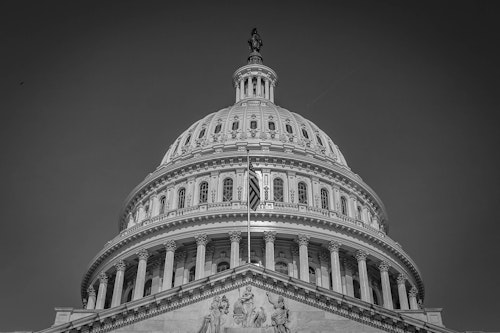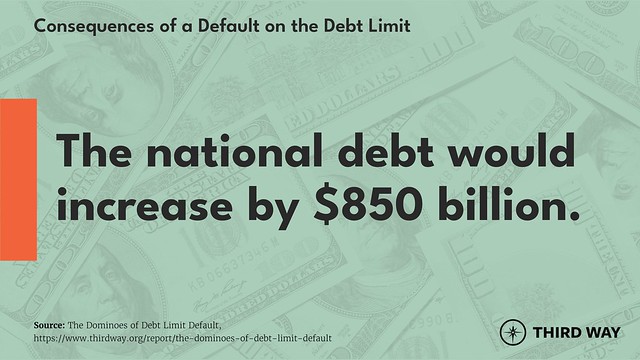7 Dangers of Defaulting on the Debt

The debt limit isn’t just an academic concept. Breaching it would be a self-inflicted economic catastrophe. It would impact every person in America and everything the government spends money on, from food inspectors to Social Security and Medicare.
If Republican brinksmanship forces the United States to default on its debt, it will have brutal and wide-ranging consequences for families and the US economy, such as:
- Social Security Default. One out of every $5 the government spends is on Social Security checks. Breaching the debt limit means the government can’t pay its bills on time and 21% of those bills is a monthly check that Social Security recipients may not receive.1
- Jobs disappear. A debt default means a recession, with estimates of job losses between 3 million and 6 million—undoing nine months or more of employment growth.2
- Retirement savings evaporate. A typical worker near retirement with 401(k) savings could lose $20,000 from a 17% to 27% stock market drop, as previously forecasted by Moody’s and the US Treasury Department.
- Houses cost even more. The average new 30-year mortgage would cost an additional $130,000 due to higher interest rates throughout the economy.
- Borrowing dries up. Lending will slow, and it would become harder to borrow for everything from small business loans to car loans to student loans.
- Everyday items cost a lot more. American consumers will see higher price tags for everyday items because of more costly imports. Items ranging from electronics to clothing and even some food would become more expensive.
- Debt balloons. The debt will increase by $850 billion. Higher interest rates cause the existing debt to become more expensive as time goes on.
Economic dominoes will fall one after another. For more information, we encourage you to check out The Dominoes of Debt Limit Default.
Download the Twitter Graphics
Downloads
Endnotes
Center for Budget and Policy Priorities. “Policy Basics: Where Do Our Federal Tax Dollars Go?” Center on Budget and Policy Priorities, 28 Jul. 2022. https://www.cbpp.org/research/federal-budget/where-do-our-federal-tax-dollars-go. Accessed 25 Jan. 2023
Zandi, Mark. “Debt Limit Brinkmanship (Again).” Moody’s Analytics, 23 Jan. 2023. https://www.moodysanalytics.com/-/media/article/2023/debt-limit-brinkmanship.pdf. Accessed 25 Jan. 2023
Subscribe
Get updates whenever new content is added. We'll never share your email with anyone.

